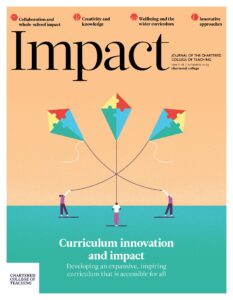What Effect does the Teaching of Polya’s Problem Solving Steps have on the Ability of Year 5 Girls when Solving Non-Routine Problems in Mathematics?
Written by: Claire Coolin

10 min read
Claire Coolin, Oxford High School GDST, Oxford, United Kingdom
Introduction
Reflecting on my time in the classroom, I recognise that girls in my classes were achieving well and performing, in many cases, beyond age-related expectations. They understood concepts taught and, when given routine problems which followed the theme or topic being covered that week, were able to find solutions. However, when it came to applying previously learned knowledge in unfamiliar situations, my students often struggled. The difficulty with problem solving came from making the connection with what was learned and applying this to something non-routine and unexpected.
This action research project aimed to investigate the following: ‘What effect does the teaching of Polya’s problem-solving steps have on the ability of Year 5 girls (ages 9-10) when solving non-routine problems in mathematics?’
Literature review
As educators, one of our responsibilities is to prepare our students for adult life.
Join us or sign in now to view the rest of this page
You're viewing this site as a guest, which only allows you to view a limited amount of content.
To view this page and get access to all our resources, join the Chartered College of Teaching (it's free for trainee teachers and half price for NQTs) or log in if you're already a member.
- Ajai JT and Imoko BI (2015) Gender Differences in Mathematics Achievement and Retention Scores: A Case of Problem-Based Learning Method. International Journal of Research in Education and Science 1(1): 45–50.
- Cai J (2003) Singaporean students' mathematical thinking in problem solving and problem posing: An exploratory study. International Journal of Mathematical Education in Science and Technology 34(5): 719–737.
- Karatas I and Baki A (2013) The Effect of Learning Environments Based on Problem Solving on Students’ Achievements of Problem Solving. International Electronic Journal of Elementary Education 5(3): 249–268.
- Mertler CA (2017) Action Research: Improving Schools and Empowering Educators, fifth edition. Thousand Oaks, CA: SAGE Publications.
- Wilson JW, Fernandez ML and Hadaway N (1993) Mathematical Problem Solving. In: Wilson PS (ed) Research Ideas for the Classroom: High School Mathematics. New York: Macmillan, pp. 57–78.
0
0
votes
Please Rate this content
Subscribe
Please login to comment
0 Comments
Oldest
Newest
Most Voted
Inline Feedbacks
View all comments










